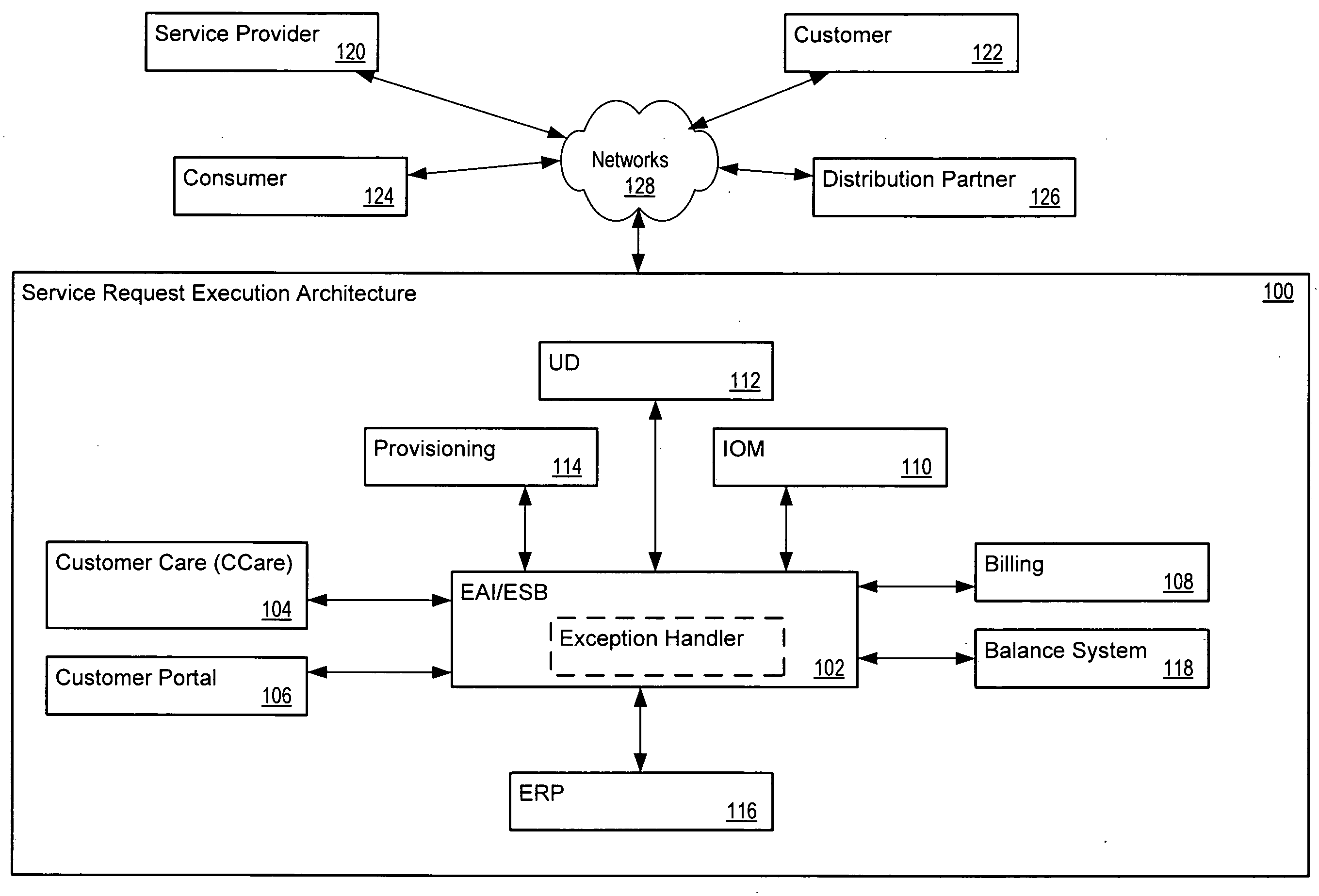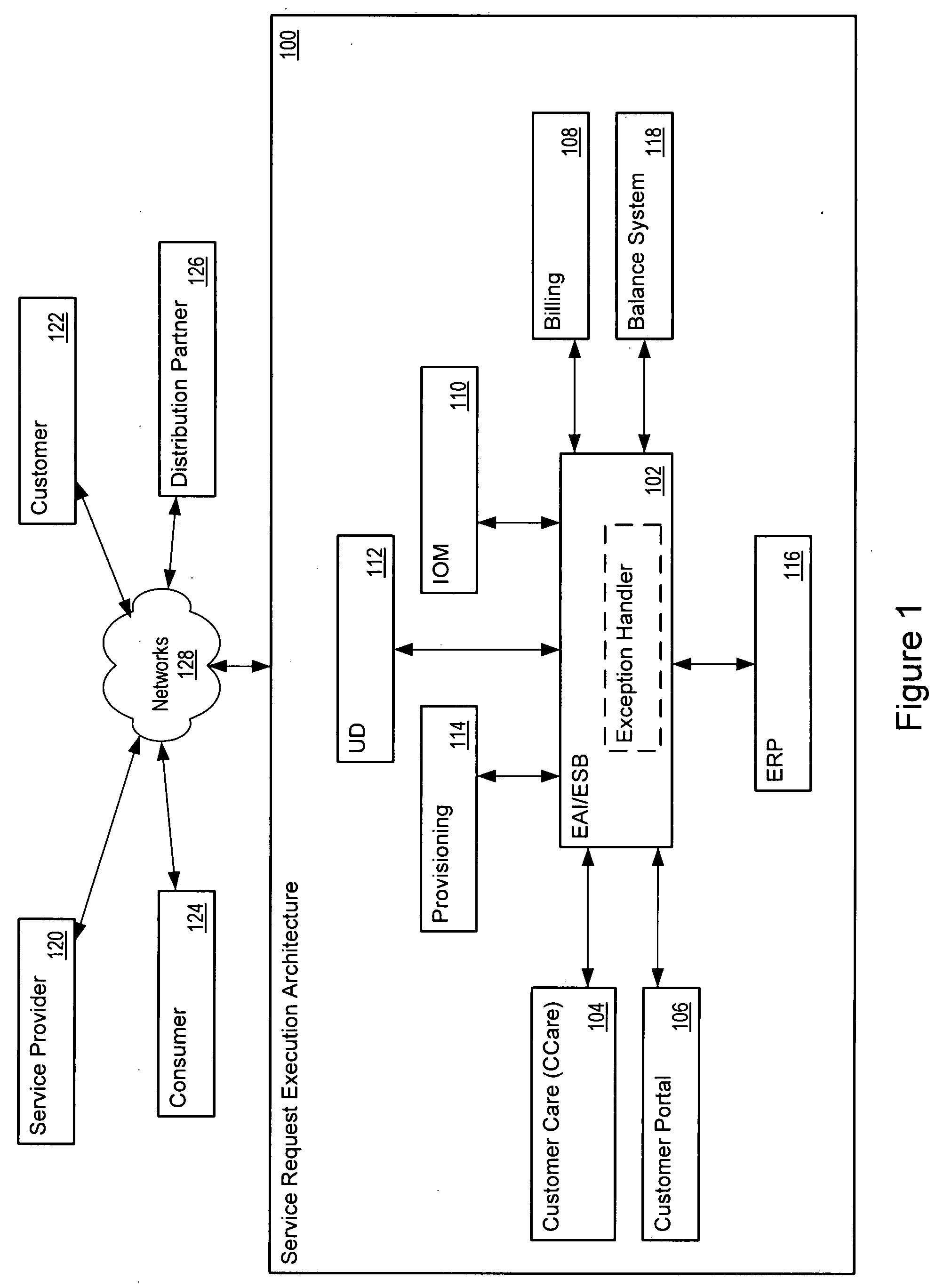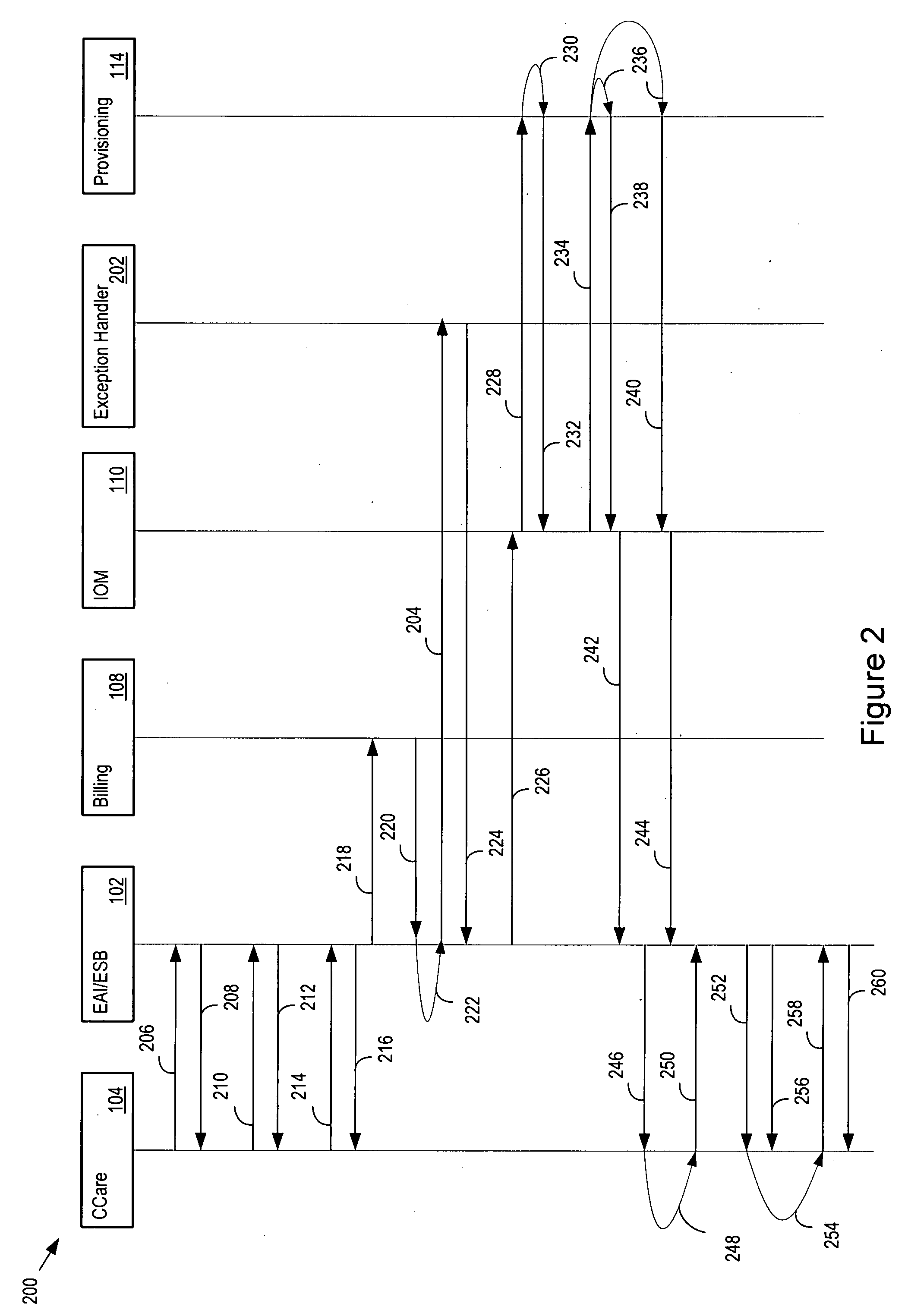Service request execution architecture for a communications service provider
- Summary
- Abstract
- Description
- Claims
- Application Information
AI Technical Summary
Benefits of technology
Problems solved by technology
Method used
Image
Examples
Embodiment Construction
[0024]The architecture may uniquely define operational events (e.g., actions) that the architecture maps to business services (e.g., service requests directed to a service). The architecture may use business services to exchange information between systems involved in the delivery and management of services. In one implementation, the architecture implements a data model schema that defines entities used to create, read, update and delete service requests. Entities may represent discrete objects within the architecture used to offer consumers services and manage the delivery of services to customers. As examples, the architecture may include entities such as a billing account entity, customer entity, and organization entity. Entities may include attributes that uniquely identify service requests and define correlation codes. The architecture may use correlation codes to identify and manage related service requests in an orchestrated manner. For example, the architecture may use corr...
PUM
 Login to View More
Login to View More Abstract
Description
Claims
Application Information
 Login to View More
Login to View More - R&D
- Intellectual Property
- Life Sciences
- Materials
- Tech Scout
- Unparalleled Data Quality
- Higher Quality Content
- 60% Fewer Hallucinations
Browse by: Latest US Patents, China's latest patents, Technical Efficacy Thesaurus, Application Domain, Technology Topic, Popular Technical Reports.
© 2025 PatSnap. All rights reserved.Legal|Privacy policy|Modern Slavery Act Transparency Statement|Sitemap|About US| Contact US: help@patsnap.com



